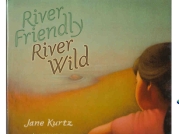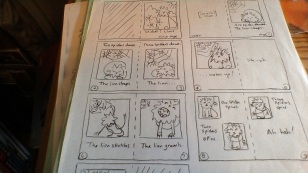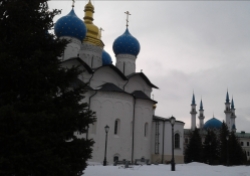
After decades of publishing books that have sometimes been called lyrical and important and poetic, I’m about to publish a picture book that my friend Carmen Bernier Grand calls hilarious.

Thanks, Carmen.
Ironically, this book was born in a brainstorming session where my writer retreat friends and I were making each other laugh—and the idea for it wasn’t even mine. I was just the one who seriously wanted it. Now it’s about to come out and I’m terrified.
Aren’t you often terrified?
Art makes us vulnerable, and the sea can be so brutal.
My writer friends and I sometimes shout, “Back, back, Fearnando.”
Poor Fearnando. He just wants to protect us. As shame guru Brene Brown (she of the academic research around vulnerability) tells us, “The message is, do it! Get your courage on, but be clear that it won’t be easy. It’s going to feel like shit.”
(This is an appropriate message from someone who would write What Do They Do With All That Poo.)

Humor is, well, fun and games. Right up to the point someone slips on a banana peel.
I thank my lucky stars that one day I took a deep breath and began to sing as part of my Vermont College of Fine Arts lecture (which is another story) and Cate introduced herself afterwards and admitted she sings and…

…Reader, we sang. (Singing in public is scary. It’s a lot like telling a joke. Do you feel—as I do at times—that you can die from scary? But do you also feel more alive when you’re taking risks?)
Cate also wrote her critical thesis on funny picture books, and since I was her adviser I got to think about all of this. A lot. (Thank you, Cate—and she’s going to post for all of us later this month and give us all kinds of wisdom about why women feel they are so shut out of humor in picture books.)
That’s why I read an article called “The Dark Psychology of Being a Good Comedian” (https://www.theatlantic.com/health/archive/2014/02/the-dark-psychology-of-being-a-good-comedian/284104/) about how humor dances on the edge of the unacceptable. Is often transgressive. As the article says, “Go purely light-hearted and you risk being toothless. Too edgy, and you’ll make people uncomfortable.”
It made me look inside for part of the answer. Good girls don’t bite. Luckily, I was born fierce. (So was my daughter, who demanded that her teachers have a sense of humor. So was my granddaughter–as you can see.)
My mom recently asked me, “When did you get to be so civilized?” Well, Mom, it happens to the best of us. But Mom herself was pretty unconventional–tough, but also witty. When I was growing up in rural Ethiopia and we were given a chicken to carry with us in the Jeep, I made her laugh and laugh by announcing, “I smell something foowwwwl.”
I did not win any good-kid awards in my family. I did get to feel the zingy power that comes from making someone laugh.
My dad loved a funny story, too. And in my family we didn’t get the memo that only boys get to take after Dad–because for a long time there weren’t any.
Humor. Often so uncivilized. I have a feeling we’ll have to push hard to wedge this particular door open wider because there’s a lot at stake in seeing women as sweet and ladylike. Grandmas? We wear aprons and are jolly and warm and comforting. In other words, on the other side of the door, a big sweaty mass is pushing back.
Brene Brown says, “I want to create. I want to make things that didn’t exist before I touched them. I want to show up and be seen in my work and in my life. And if you’re going to show up and be seen there is only one guarantee. And that is, you will get your ass kicked.”
I don’t like getting my ass kicked. I—like you, like all humans, probably–have been on a lifelong quest to get over shame. To actively…with big gulps…resist the idea that I was born to sit down and shut up and make myself small.
You?
When the sea is brutal, there’s only one real boat for me.
The sisterhood.

Yes, I mean my actual sisters (and my brother, too) who make me laugh harder than anybody else can.
I also mean my sisterhood of writer friends. For example, recently Jennifer Jacobson and I have been exchanging manuscripts and we ask each other for help in answering how can this story take more risks, be more inventive, be more muscular?
And I mean the sisterhood of teachers, librarians, academics, reviewers who can use their power to amplify the voices of the small peepers down here up to our eyeballs in sand.
Maybe a woman walked into a bar…and walked away with a black eye.
But maybe the sisters are there with ice packs and raw beef.
Didn’t we once, long ago, burn our bras together and feel the power?









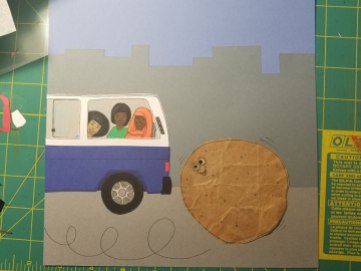









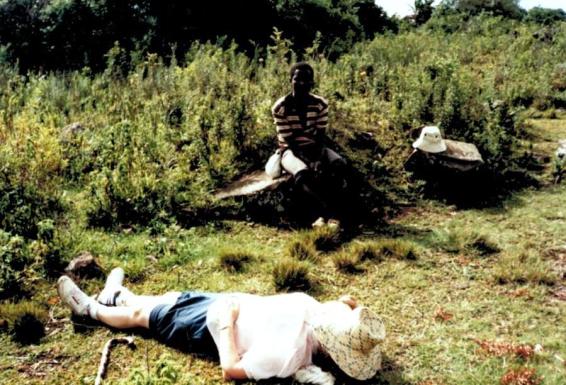






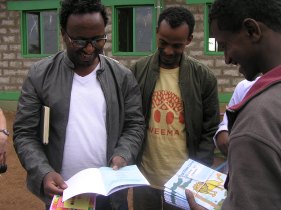






 I have been eagerly awaiting Planet Jupiter, the newest middle-grade novel by Jane Kurtz. Kurtz’s novels contain the number one thing I search for in stories: HEART. Planet Jupiter is no exception. It is a deeply layered and incredibly moving. For this reason alone, I want to thrust it into the arms of young readers, teachers, and librarians. But it also contains an oft forgotten truth.
I have been eagerly awaiting Planet Jupiter, the newest middle-grade novel by Jane Kurtz. Kurtz’s novels contain the number one thing I search for in stories: HEART. Planet Jupiter is no exception. It is a deeply layered and incredibly moving. For this reason alone, I want to thrust it into the arms of young readers, teachers, and librarians. But it also contains an oft forgotten truth.





 …if Stephanie and Dr. Ann Porter in Grand Forks, ND, hadn’t financially supported us with materials and to help pay for design and translation…if people in Portland like Ann Griffin and Laurie Curtis and Beth Neel and others hadn’t helped set up a bookmaking day here…if Molly Curran hadn’t talked to her daughter’s school and teachers hadn’t said YES…
…if Stephanie and Dr. Ann Porter in Grand Forks, ND, hadn’t financially supported us with materials and to help pay for design and translation…if people in Portland like Ann Griffin and Laurie Curtis and Beth Neel and others hadn’t helped set up a bookmaking day here…if Molly Curran hadn’t talked to her daughter’s school and teachers hadn’t said YES…










